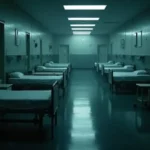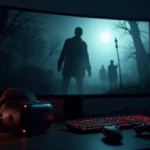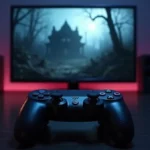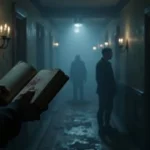
How to complete teach the police trial in Outlast Trials
Discover deadly strategies to outsmart your foes and complete the Teach the Police Trial in Outlast Trials—mastery demands more than just skill.


When the sun goes down and the streets grow quiet, a different kind of thrill awakens — the world of night horror games. These aren’t just any games; they’re immersive, nerve-wracking experiences that thrive in darkness. They transform your screen into a portal to terrifying worlds, where every creak of a door or flicker of light could mean danger. This electrifying late-night tradition is what gamers call the “night fever” — an obsession with playing horror titles in the dead of night for maximum fear and excitement.

The true power of night horror games lies in their ability to grip you mentally and emotionally. They’re not just about jump scares; they’re about building a sustained atmosphere of dread that keeps you hooked for hours. The best ones combine:
This potent mix doesn’t just scare you — it makes you feel like you’re fighting for your life.
Horror can be unsettling at any time of day, but something happens when you turn off the lights. Darkness strips away distractions and heightens your senses, making night horror games more intense and personal. Playing after sunset brings several unique advantages — and terrors:
This is why “night fever” is not just a marketing term — it’s a real psychological effect.
The popularity of night horror games has exploded thanks to platforms like Twitch and YouTube. Watching a streamer genuinely panic in Outlast or tiptoe through Phasmophobia is entertaining in itself. This has led to a powerful cycle: streamers attract viewers with their authentic fear, those viewers get curious about the game, and sales skyrocket.
Some reasons this works so well:
Horror is no longer just a solo experience — it’s a global spectacle.
Over the years, certain titles have defined the night horror games genre and inspired countless imitators:
Part of the allure of night horror games is their replay value. Different choices, hidden secrets, and alternative endings give players reasons to return. The more familiar you become with a game, the braver you feel — but even then, the right sound or jump scare can catch you off guard.
Developers know this, and they use advanced techniques to keep the fear fresh, including:
As VR, 3D audio, and AI storytelling evolve, the next generation of night horror games will be even more personal and terrifying. Imagine a game that listens to your breathing, detects your fear level, and changes events in real time to push your limits. The line between reality and fiction will continue to blur, and for fans of the genre, that’s the ultimate thrill.
Night horror games are more than just entertainment, they are a test of courage, perception, and psychological endurance. Playing in the dark amplifies fear, immerses you in the story, and creates unforgettable experiences that linger long after the game ends. Whether you’re surviving alone, strategizing with friends, or watching a streamer’s terrified reactions, the thrill of night horror games is unmatched.
As technology continues to advance, these games will push boundaries further, offering even deeper immersion, smarter AI, and more personalized scares. So when the sun goes down, embrace the darkness, put on your headphones, and step into worlds that challenge your mind, your reflexes, and your very sense of reality.

Discover deadly strategies to outsmart your foes and complete the Teach the Police Trial in Outlast Trials—mastery demands more than just skill.

Nothing in Outlast’s female ward is as it seems, revealing unsettling secrets that challenge everything you thought about the asylum’s dark past.

Keen fans of fear will find 2025’s best horror games redefine terror, but which titles deliver the ultimate nightmare experience? Discover the chilling answers here.

What makes the best Resident Evil game truly unforgettable? Discover the thrilling factors that set these iconic titles apart and decide for yourself.

Hidden behind her haunting resemblance to Mary, Maria in Silent Hill 2 challenges reality and reveals unsettling truths about guilt and desire.

Only glimpses of Resident Evil 9’s story and gameplay have emerged, teasing new horrors and characters that fans won’t want to miss.